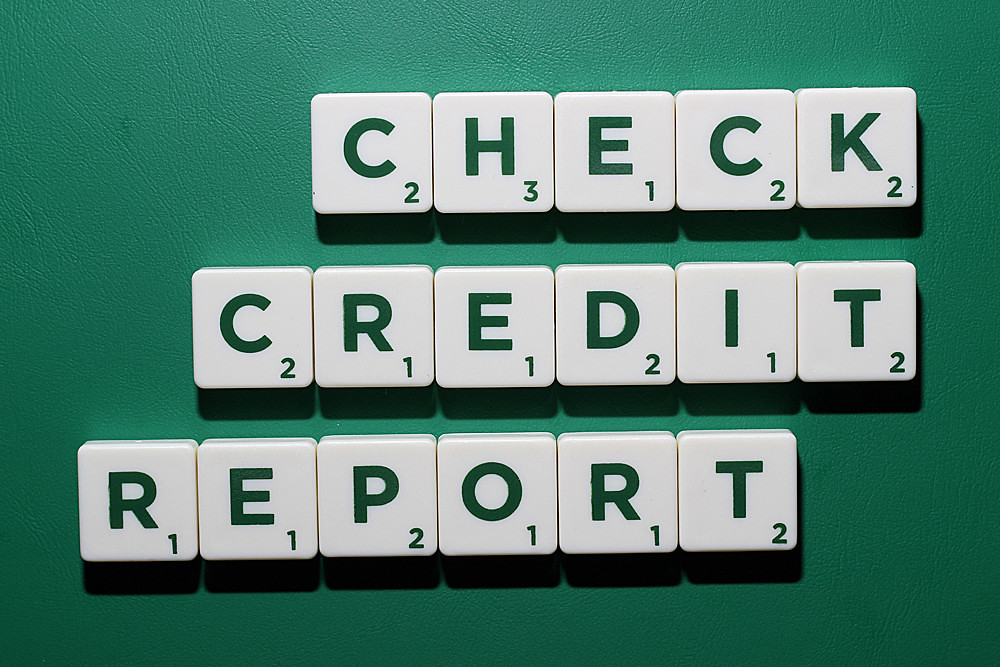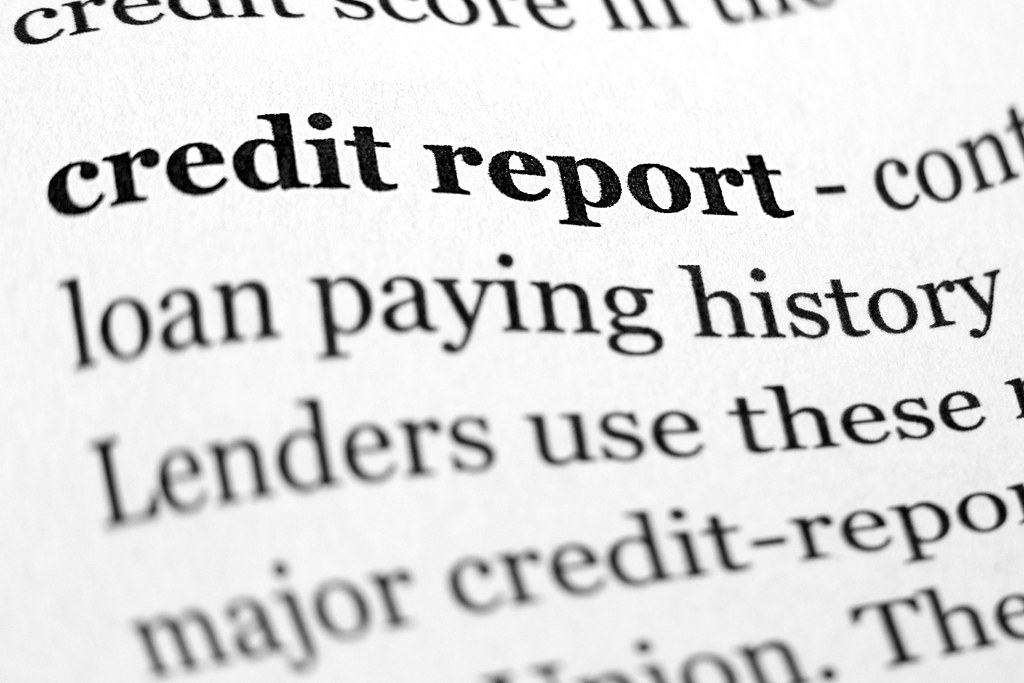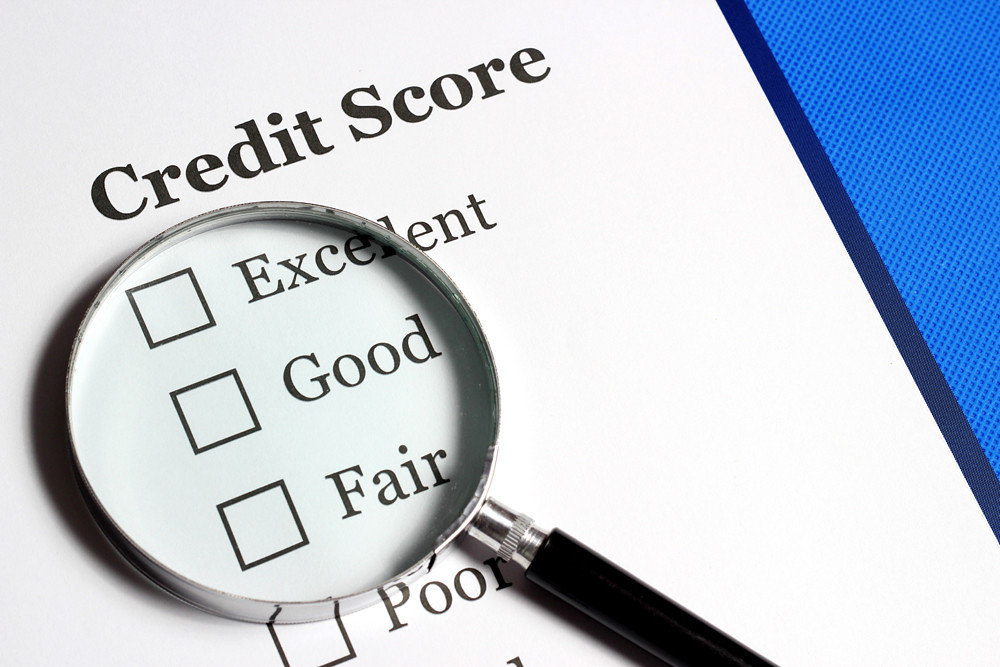
In our increasingly interconnected financial world, your credit report serves as a pivotal document, acting as a detailed reflection of your financial health and responsibility. It’s far more than just a score; it’s a comprehensive history that lenders, insurers, landlords, and even potential employers consult to make crucial decisions about you. An accurate credit report is your strongest advocate, opening doors to favorable loan terms, competitive insurance rates, and even housing opportunities. Conversely, errors on this vital document can severely impede your financial progress and cause unnecessary stress.
Unfortunately, credit report errors are a surprisingly common occurrence. A Federal Trade Commission (FTC) study highlighted that a notable 5% of consumers found mistakes on their credit reports that could negatively impact their loan chances. More recently, a 2024 joint investigation by Consumer Reports and Work Money revealed that a significant 34% of those who discovered errors had issues related to their personal information. These inaccuracies, if left unaddressed, can drastically affect your credit score and overall financial standing, creating roadblocks where there should be clear paths.
But here’s the good news: you don’t have to navigate this complex terrain alone. Federal law provides a clear framework for disputing inaccurate information on your credit report, and crucially, there is no fee for filing a dispute. This in-depth, 12-step action plan is designed to empower you with the knowledge and practical strategies needed to identify, dispute, and ultimately correct credit report errors, safeguarding your financial future. We’ll walk you through each stage, ensuring you have the confidence and clarity to take control of your credit profile.

1. **Understand Why Accuracy Matters**
Your credit report is more than just a collection of numbers; it’s a powerful narrative that profoundly influences your financial life. It directly impacts whether you can borrow money, and perhaps even more importantly, how much you’ll have to pay to borrow it. This influence extends across various aspects of your life, reaching far beyond just securing a loan or a credit card.
Credit bureaus meticulously gather and compile information, which they then sell to businesses. These entities, ranging from banks and credit card companies to insurance providers and landlords, utilize your report to make informed decisions. They assess your creditworthiness, determining whether to extend you credit, offer insurance policies, or approve your application to rent a home. Even some employers factor credit reports into their hiring processes, underscoring its broad significance.
The strength and accuracy of your credit history directly correlate with the financial terms you’ll encounter. A robust and clean credit report typically translates into lower interest rates on loans and mortgages, saving you substantial amounts over time. Conversely, a report riddled with errors or negative (even if accurate) entries can lead to higher interest rates, limiting your financial flexibility and increasing your overall debt burden. It’s an undeniable cornerstone of your financial identity.
Therefore, being proactive about your credit report’s accuracy is not just a suggestion; it’s a financial imperative. You want to ensure that the information presented about you is both accurate and complete, reflecting your true financial behavior. Taking the time to understand its far-reaching implications is the essential first step in building and maintaining a healthy financial life.
Read more about: The Enduring Magic: Why Forgotten Physical Ticket Stubs Still Stir Our Souls in a Digital Age
2. **Obtain and Review Your Credit Reports Regularly**
Taking control of your credit health begins with a simple yet powerful action: regularly checking your credit reports. This vigilance allows you to spot any discrepancies or signs of identity theft before they escalate into significant financial problems. Fortunately, accessing your reports is straightforward, thanks to federal regulations designed to protect consumers.
You have a legal right to receive free copies of your credit report from each of the three major credit bureaus: Experian, Equifax, and TransUnion. The primary gateway for this is AnnualCreditReport.com, where you can obtain one free report from each bureau every 12 months. This consistent access is crucial for ongoing monitoring and peace of mind, allowing you to review your financial history annually across all reporting agencies.
In an even greater stride towards consumer empowerment, the three bureaus have permanently extended a program allowing you to check your credit report from each once a week for free through AnnualCreditReport.com. This provides unprecedented access, making it easier than ever to keep a close eye on your financial data. Furthermore, anyone in the U.S. can obtain an additional six free credit reports per year through 2026 by visiting the Equifax website or calling 1-866-349-5191, supplementing the reports available via AnnualCreditReport.com.
Regularly checking your credit report is also one of the most effective ways to detect identity theft. This insidious crime occurs when someone uses your personal information—such as your name, address, credit card or bank account numbers, or Social Security number—without your permission. They might open new accounts, make unauthorized purchases, or even file for your tax refund. If you suspect identity theft, acting quickly is paramount; visit IdentityTheft.gov to report it and initiate a personalized recovery plan.
Read more about: Don’t Let These Simple Mistakes Sabotage Your Financial Future: How Common Errors Can Instantly Drop Your Credit Score by 50 Points

3. **Spot Inaccurate Information**
Identifying errors on your credit report is the crucial next step after obtaining your reports. While federal law empowers you to dispute inaccurate information without any fee, knowing what precisely constitutes an error and what to look for will streamline your efforts. Being able to pinpoint these inaccuracies effectively is key to a successful dispute process.
Common errors found on credit reports often fall into several distinct categories. These frequently include incorrect personal information, such as misspelled names or outdated addresses, which can still cause significant issues. Account information errors are also prevalent, manifesting as inaccurate balances, incorrect credit limits, or accounts reported as open when they should be closed. Furthermore, fraudulent accounts opened in your name, duplicate listings of the same account, or outdated and inaccurate credit inquiries can all adversely affect your credit standing.
It’s important to understand the scope of what you can dispute. You can challenge information you believe is incorrect, which includes late payments that were actually made on time, inaccurate balances or credit limits, and accounts mistakenly reported as closed when they are still active. However, it’s equally vital to recognize what you *cannot* dispute. If information is correct, even if it’s negative—like a legitimately late payment or a bankruptcy—credit bureaus are allowed to report it for a specific duration. Most negative information remains for seven years, while bankruptcy information can stay on your report for up to ten years.
Some specific types of inaccuracies may require particular handling. For instance, if you find an incorrect name or address, unauthorized inquiries, or signs of identity theft, you might find that these items cannot be disputed online. In such cases, the credit bureau may direct you to contact a dispute specialist over the phone or submit your dispute via mail. Tailoring your approach to the type of error ensures the most efficient resolution.
Read more about: Unpacking the Digital Deluge: Simple Secrets to How Social Media Platforms Filter Out Fake News for a Wiser You

4. **Gather Your Personal Identification Details**
When preparing to file a credit report dispute, having all your personal identification details readily accessible is absolutely essential. This information serves to verify your identity with the credit bureaus and the businesses reporting the data, ensuring that your dispute is accurately linked to your file and processed without unnecessary delays. Think of it as your digital signature and proof of who you are.
You should be prepared to provide a comprehensive set of personal identifiers. This includes your full name, making sure to include any middle initial and suffix, such as Jr., Sr., II, or III, to match official records precisely. Your Social Security Number and date of birth are also critical for identification. Furthermore, you will need to list your current address and all addresses where you have resided during the past two years, as your credit history is often tied to these locations.
Depending on the specific method you choose to submit your dispute—whether online or by mail—you might be asked for additional verifying information. For online submissions, providing your email address is usually a requirement for communication. For either method, it’s common to be asked for a copy of a government-issued identification card, such as a driver’s license or state ID card, to confirm your identity.
In some instances, to further establish your residency and identity, you might also need to provide a copy of a utility bill or a bank or insurance statement. These documents serve as secondary forms of identification and proof of address. Having all these details prepared beforehand will significantly expedite the dispute process, preventing back-and-forth requests for information and allowing you to focus on the specifics of your inaccurate credit entry.
Read more about: Your Ultimate Guide to Boosting Car Trade-In Value: 14 Simple Secrets for a Better Deal

5. **Compile Supporting Documentation**
Once you’ve identified the errors and gathered your personal details, the next critical step is to compile compelling supporting documentation. This evidence is the backbone of your dispute, lending credibility to your claims and significantly increasing the likelihood of a successful resolution. Without concrete proof, your dispute might be difficult to verify.
You should clearly list each item on your credit report that you believe is inaccurate. For each item, be sure to include the creditor name, the specific account number associated with the error, and a clear, concise reason why you believe the information is incorrect. This level of detail helps the credit reporting company and the data furnisher precisely understand the nature of your complaint and where to focus their investigation.
The type of documentation that will be most helpful naturally depends on the nature of the information you are disputing. For instance, if an account is the result of identity theft, submitting police reports or a Federal Trade Commission (FTC) Identity Theft Report is crucial. For accounts that were included in or discharged in bankruptcy, providing bankruptcy schedules will serve as definitive proof.
Other valuable documents include letters from creditors that explicitly show how an account should be corrected, or student loan disability letters indicating a loan has been discharged due to disability. If a collection account has been mistakenly reported as unpaid, cancelled checks can demonstrate that the payment was indeed made. For public records, court documents provide the necessary verification. Always remember to submit *copies* of these documents, never originals, as they will not be returned to you following the investigation. Keeping your originals safe is paramount.
Read more about: Navigating a Total Loss: Your Comprehensive Consumer Guide to Car Accidents and Insurance Settlements

6. **Choose Your Dispute Channel: Online, Mail, or Phone**
With your personal information and supporting documents ready, the next practical step is to decide how you will submit your dispute. You have three primary avenues for disputing information on your credit report: online, by mail, or by phone. While there isn’t one method that is universally superior, each offers distinct advantages depending on your situation and the type of error you’re addressing.
Many consumers find that filing disputes online is often the fastest and most convenient method. Each major credit bureau—Experian, Equifax, and TransUnion—maintains its own dedicated online interface for submitting disputes. You’ll typically be asked to share some basic personal information or to sign into an existing account. For example, with Experian, you would navigate to their Dispute Center to initiate the process. Online platforms often allow for quick uploading of documents and real-time tracking of your dispute status.
Alternatively, you can choose to dispute by mail, which provides a tangible paper trail that some individuals prefer. To do this, you’ll need to download the dispute form directly from the credit bureau’s website and meticulously follow their instructions for mailing your dispute. Mail addresses for each bureau are provided: Equifax (P.O. Box 740256, Atlanta, GA 30374-0256), Experian (P.O. Box 4500, Allen, TX 75013), and TransUnion (P.O. Box 2000, Chester, PA 19016). When mailing documents, remember to only submit copies, not originals.
The third option is to dispute by phone. If you prefer to speak directly with a representative, you can call the credit bureaus. A dispute specialist will typically help guide you through the process and explain precisely which documents you need to submit based on your specific dispute. The phone numbers for the nationwide credit reporting companies are: Experian at 855-414-6048, TransUnion at 800-916-8800, and Equifax at 888-378-4329. It’s important to note that certain information, such as an incorrect name or address, inquiries, or suspected identity theft, may not be disputable online and might specifically require a phone call or mail submission for resolution.” , “_words_section1”: “1966

7. **Submit Your Dispute to the Data Furnisher Directly**
While filing a dispute with the credit bureaus is a crucial initial step, it’s equally important to consider contacting the data furnisher directly. The data furnisher is the business or entity that originally provided the inaccurate information to the credit reporting company, such as a bank, credit card company, or collection agency. Federal law allows you to dispute inaccurate information with them as well, and this dual approach can sometimes expedite the correction process.
When you submit a dispute directly to the business, they are obligated to investigate your claim. They will review all the information you provide and verify the accuracy of the data they are reporting to the credit bureaus. Their investigation will aim to ascertain whether the disputed information is indeed incorrect based on their own records and your submitted evidence.
The contact information for the specific business that furnished the data should be readily available on your credit report itself, often alongside the disputed account entry. Alternatively, you can typically find this information on your monthly billing statements or by contacting the company directly. Be sure to gather all your supporting documents, as outlined in Step 5, to present a comprehensive and convincing case to the furnisher.
If the business finds that the information they reported is inaccurate or incomplete after their investigation, they are required to notify all three nationwide credit bureaus (Experian, Equifax, and TransUnion) of the necessary changes. This ensures that the correction is reflected across all your credit reports, providing a consistent and accurate representation of your financial history. They will then send you the results of their investigation directly, keeping you informed of the outcome.
8. **Understand the Investigation Process**
Once you’ve submitted your dispute, either to a credit reporting company or a data furnisher, the gears of investigation begin to turn. The process is designed by federal law to ensure a fair and thorough review of your claims. Understanding how this investigation unfolds can help you set realistic expectations and feel more in control throughout the waiting period.
If you submitted your dispute to a nationwide consumer credit reporting company, they have a specific protocol to follow. Initially, the credit reporting company may make changes to your credit report based solely on the documents and information you provided, especially if the error is straightforward and clearly supported. However, in most cases, they will take further action to verify the information.
The credit reporting company will contact the business that originally reported the disputed information—the data furnisher. They will supply the furnisher with all the relevant details and any supporting documents you provided with your dispute. The furnisher is then instructed to conduct its own investigation into the accuracy of the disputed entry, reviewing both your evidence and their internal records.
Upon completing their investigation, the data furnisher must provide the credit reporting company with a response. This response will include their findings and any necessary changes to the information they are reporting. The furnisher is also required to update their own records and systems as necessary to reflect the corrected information. Subsequently, the credit reporting company will notify you of the results of this comprehensive investigation.
Read more about: Beyond Fatigue: Crucial Thyroid Disorder Symptoms You Should Never Overlook, Including Early Signs That Begin in Your Hair and Skin

9. **Know the Investigation Timeline**
Patience is a virtue, especially when navigating credit report disputes. After you’ve meticulously submitted your dispute and all supporting documentation, you might wonder how long it will take to see a resolution. Federal law stipulates a specific timeframe, ensuring that investigations are completed in a timely manner, though it’s important to understand the nuances.
You should generally allow up to 30 to 45 days for the investigation of your dispute to be completed by the credit reporting companies. This period begins from the date they receive your dispute. This timeframe provides enough room for the bureaus to forward your information to the data furnisher, for the furnisher to conduct their own investigation, and for the results to be communicated back to the bureau and then to you.
It’s worth noting that the standard resolution period is often around 30 days. However, the investigation may extend to the full 45 days if you submit additional documentation after the initial investigation has already begun. This is why it’s critical to compile all your supporting evidence upfront and submit it with your initial dispute, as outlined in Step 5. Doing so helps prevent delays and ensures a smoother, more efficient process.
Read more about: The 12 Costly Mistakes Classic Muscle Car Restorers Make: Safeguard Your Dream Project and Your Wallet

10. **Track Your Dispute Status**
Once your dispute is officially submitted, staying informed about its progress is key. Fortunately, credit bureaus have made it increasingly easy to track the status of your claim, often through convenient online portals. This transparency allows you to monitor each stage of the investigation and anticipate when you might receive a resolution.
For online disputes, you can typically track the status by logging into your account on the respective credit bureau’s website. For example, with Experian, you would navigate to their Alerts section within your account. Many bureaus also offer email alerts to provide real-time updates as your dispute moves through the investigation process, keeping you informed without requiring constant manual checks.
When tracking your dispute, you’ll encounter various status updates that indicate its current stage. An “Open” status signifies that a new dispute has just been started and is awaiting investigation. An “Update” status means that your dispute investigation has been completed, and your credit report is in the process of being updated with the results of that investigation.
Finally, a “Dispute results ready” status indicates that your credit report has been fully updated with the findings from the investigation. Understanding these terms helps you interpret the notifications you receive and know exactly where your dispute stands. This proactive tracking ensures you’re aware of any changes and when to expect your updated credit report.
Read more about: 6 Signature Watches Men Over 60 Should Buy to Make Any Casual Outfit Look Sharp All Year

11. **Interpret Possible Dispute Outcomes and Their Impact**
After the investigation concludes, you’ll receive notification of the outcome. This is a pivotal moment, as the results can directly influence your credit report and potentially your credit scores. The credit bureaus will provide a clear indication of what happened with your disputed item, and it’s essential to understand what these various outcomes mean for your financial profile.
Possible outcomes are typically categorized with straightforward labels. An “Added” outcome means the disputed item was verified and added to your credit report, implying it was previously missing or understated. If the outcome is “Updated,” the information you disputed has been changed and corrected on your credit report. A “Verified and updated” status means the information was confirmed as accurate, but other, unrelated details on the account were updated.
The most sought-after outcome is “Deleted,” signifying that the item was completely removed from your credit report due to inaccuracy. A “Processed” status usually means the item was either updated or deleted, indicating a positive change. Conversely, if the outcome is “Remains,” it means the company reporting the information verified it as accurate, and therefore, it was not changed on your report.
Filing a dispute itself does not directly affect your credit scores. However, the *outcome* of the dispute certainly can. If negative information, such as late payments or collection accounts, is removed from your report, your scores could see a positive increase. Conversely, if an account that contributed positively to your score (e.g., a long-standing, well-managed credit card) is removed or significantly updated in a way that shortens your credit history or increases your utilization, your scores could decrease. If the dispute results in no change to the information, there will be no impact on your credit scores.
Read more about: The Essential 15: Unlocking Success by Asking the Right Questions to Your Potential Business Partner

12. **What to Do If You Disagree with the Results**
Despite your best efforts, there might be instances where you disagree with the outcome of a credit report dispute. If, after reviewing the investigation results from the credit reporting company, you still firmly believe the information on your report is inaccurate, federal law provides you with several avenues to continue advocating for your financial accuracy. Don’t be discouraged; you have options.
One powerful step is to directly contact the creditor that originally reported the information to the credit reporting company. You can engage with them, providing any additional proof or clarification you have to show that their records are incorrect. If they verify your information and agree there’s an error, they are then responsible for updating the credit bureaus whose reports include the inaccurate data, ensuring a correction across the board.
Another option is to resubmit your dispute to the credit reporting company, particularly if you have new or additional information or documentation to support your claim. While bureaus may dismiss disputes as “frivolous” if you continuously dispute the same item without new evidence, providing fresh documentation gives your renewed dispute proper weight. This demonstrates your persistence and commitment to accuracy.
Furthermore, you have the right to request that a brief statement of dispute be added to your credit report. This statement, specific to your dispute of the credit information, will be visible to any organization that requests a copy of your credit report, allowing you to present your side of the story. Finally, for more severe or unresolved issues, you can file a formal complaint about the credit reporting company or the business reporting the item with powerful regulatory bodies like the Consumer Financial Protection Bureau (CFPB) or your State’s Attorney General’s office. These complaints can prompt further review and action.
Read more about: Unpacking the Digital Deluge: Simple Secrets to How Social Media Platforms Filter Out Fake News for a Wiser You
Successfully navigating the complexities of credit report disputes is a testament to financial empowerment. By following this comprehensive 12-step action plan, you’re not just correcting an error; you’re actively safeguarding your financial well-being and ensuring your credit report accurately reflects your hard-earned financial responsibility. Remember, vigilance and persistence are your greatest allies in maintaining a healthy credit profile.





